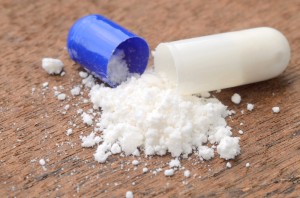
Binge eating disorder (BED) is one of the eating disorders, and is therefore in a group of disorders with the more well known anorexia nervosa and bulimia nervosa.
In DSM-IV (the manual published by the American Psychiatric Association for the purposes of classification of mental disorders), BED is part of the “eating disorders not otherwise specified” (EDNOS) category. This category describes people who have a lot of the symptoms of a significant eating disorder, but who do not meet the full criteria to be diagnosed as having anorexia nervosa or bulimia nervosa.
The use of criteria of course sounds rather divorced from human experience and perhaps even the idea of diagnosis or categorisation of mental illness sounds harsh to some. However, such criteria are very useful for research purposes and many people find comfort from getting a particular diagnosis. (Some might use the term, “finally getting a diagnosis”, but that’s a different issue.) Although, just because criteria are useful or in some cases comforting, it doesn’t make them right. This too is another issue for another time. That makes two. We’ll run out of other times at this rate.
BED is primarily characterised by recurrent episodes of excessive food consumption (unsurprisingly known as binge eating). These episodes are usually accompanied by a sense of loss of control and psychological distress, but are not followed by the inappropriate attempts at weight-loss seen in people with bulimia nervosa. An eating episode is considered as a binge-eating episode when an amount of food is eaten that is definitely larger than what most people would eat during a similar discrete period (often defined as 2 hours) of time and under similar circumstances.

Binge-eating episodes are defined by eating an amount of food that is definitely larger than what most people would eat during a similar discrete period.
It is not currently known what causes BED. In fact, it is only comparatively recently that it was given its own category within DSM-V, its diagnostic category in DSM-IV being regarded as provisional and needing further research. Many argue that BED isn’t an eating disorder at all, but is a reflection of personal choices, which is odd, given that the very definition requires the person to have a sense of lack of control.
The regulation of energy and appetite in the body occurs through a complex interaction of hormones, nutrients and neuronal signals within the central nervous system. Receptors for numerous appetite-regulating hormones and neurotransmitters can be found in the arcuate nucleus (Part of the hypothalamus in the brain and an excellent name for a character in Harry Potter. Probably one who cleans the calculators in the Ministry of Not Proper Magic Like the Other Wizards Do, but it’s a start).
Pathological overeating may be related to dysfunction of the dopamine in this norepinephrine system. Food has been shown to generate abnormal dopamine responses in obese individuals and inhibition of dopamine transport leads to greater increases of dopamine levels within the caudate of obese individuals with BED compared with those without BED. Further research is needed though, and quite frankly, there isn’t much behaviour that changes in dopamine levels haven’t been linked to.

Agents such as dextroamphetamine (which inhibit the reuptake of dopamine and norepinephrine, among other things) could alter pathological binge eating and thus be feasible treatments for BED.
It is argued that if dopamine is involved in causing BED, then agents such as dextroamphetamine (which inhibit the reuptake of dopamine and norepinephrine, among other things) could alter pathological binge eating and thus be feasible treatments for BED. Lisdexamfetamine dimesylate is a dextroamphetamine pro-drug (the body metabolises it into a working drug) approved for the treatment of attention-deficit/hyperactivity disorder (ADHD) in children, adolescents and adults.
A study was therefore initiated (and obviously completed, hence this blog) with the aim of examining the efficacy and safety of lisdexamfetamine dimesylate in the treatment of moderate to severe BED.
Methods
The study was conducted across multiple centres. People who volunteered to take part were randomised to their study group in a double-blind fashion. That is to say, neither the participant nor the researchers knew which study group the patients were in.
Participants received a placebo or 30, 50, or 70 mg per day of lisdexamfetamine dimesylate. Once-daily oral doses for participants assigned to the 30, 50, or 70 mg per day treatment groups were started at the 30 mg per day dose and increased weekly in increments of 20 mg per day until they reached their assigned dosage.
The overall study duration for each participant was 14 weeks. Treatment was administered for 11 weeks.
Inclusion criteria
- Adults (aged 18-55 years) who met the DSM-IV-TR diagnostic criteria for BED could be included. The diagnosis was confirmed using the eating disorders module of the Structural Clinical Interview for DSM-IV-TR and the Eating Disorder Examination Questionnaire.
- Additional eligibility criteria included a body mass index of at least 25 and no greater than 45.
Exclusion criteria included, but were not limited to:
- Current bulimia nervosa, anorexia nervosa, ADHD, or another psychiatric disorder
- History of bipolar disorder or psychosis or other conditions that may confound efficacy and safety assessments
- Psychological or weight-loss interventions initiated within 3 months of screening
- Use of a psychostimulant within the prior 6 months
- Personal or family history of cardiovascular disease
- Recent history of suspected substance abuse or a lifetime history of psychostimulant abuse and/or dependence
Efficacy
The primary measure used to assess how effective the treatment was was the number of binge-eating days per week based on clinician interview and confirmation of identified binge-eating episodes in participants’ self-reported binge-eating diaries. The primary efficacy endpoint was the change from baseline to week 11 on the log-transformed scale (binge-eating days per week) + 1. This was because of maths.
Safety and tolerability were assessed using the number of treatment-emergent adverse events, vital signs, laboratory results e.g. biochemistry, weight, and whether or not the participants would put up with the drug and the study.

The primary efficacy measure was the number of binge-eating days per week based on clinician interview and participant confirmation of self-identified binge-eating episodes.
Results
Participants
- 255 people were included in the efficacy analyses and 259 in the safety analyses.
- Mean age 38.7 years, 81.5% female, 78% Caucasian.
Efficacy
- The mean changes from baseline to week 11 or early termination in non-transformed (maths) binge-eating days per week for the placebo and the treatment groups were:
- Placebo -3.3 (2.04)
- 30 mg -3.5 (1.95)
- 50 mg -4.1 (1.52)
- 70 mg per day -4.1 (1.57)
- The primary efficacy end point was significantly decreased in the 50 and 70 mg per day treatment groups, but not in the 30 mg per day treatment group compared with the placebo group.
- Essentially, binge eating only decreased in a significant manner (statistically speaking) in the participants receiving 50 or 70 mg of lisdexamfetamine per day.
Safety
- Among the 196 participants receiving lisdexamfetamine, 6 (3.1%) stopped treatment as a result of treatment-emergent adverse events and 3 (1.5%) had serious treatment-emergent adverse events.
- One participant (in the 70 mg per day treatment group) died because of toxicology findings consistent with a methamphetamine overdose. Although the participant had denied a history of substance abuse, post mortem toxicological analysis found methamphetamine/amphetamine levels consistent with methamphetamine overdose and the study investigator did not ultimately consider this death to be related to the study drug. This death is obviously a cause for concern and would be a devastating side effect if that’s what it turned out to be. Without further information from the study report we will have to concur with the authors that it is not related to the drug being studied, and that the death was a terrible event that occurred during the study, but not as a direct result of lisdexamfetamine treatment.
- Patients’ mean heart rate tended to increase with lisdexamfetamine treatment as you might expect.
- No clinically meaningful trends were observed for clinical laboratory results or electrocardiography data.
- While participants’ mean weight decreased with treatment; the placebo groups experienced no mean weight change.
Overall, the safety profile of lisdexamfetamine was generally consistent with that seen in studies of lisdexamfetamine in adults with ADHD in the types and frequency of adverse effects.

Three of the 196 people receiving lisdexamfetamine had serious treatment-emergent adverse events.
Conclusion
In the primary analysis of this study of adults with moderate to severe BED, lisdexamfetamine dimesylate treatment with 50 and 70 mg per day, but not 30 mg per day, demonstrated a significant decrease (compared with placebo) in weekly binge-eating days per week at week 11.
The authors concluded that these findings provide preliminary evidence that lisdexamfetamine may be effective for treatment of moderate to severe BED. This would be consistent with its effect on dopamine and other neurotransmitters.
Limitations
- It’s worth keeping in mind that this trial was funded by Shire Development, who happen to make lisdexamfetamine. The theory goes that this shouldn’t impact the results of the experiment or the scientific description of those results, but the sponsorship should be mentioned at the end of the paper and is useful to remember here.
- Most participants in the study were female and Caucasian. While eating disorders such as anorexia nervosa and bulimia nervosa are more common in women, BED is more evenly divided between men and women for the number of people experiencing it. Although research is limited, rates of BED have been found to be fairly comparable across different ethnicities. On top of all this, participants with certain co-morbid illnesses (e.g., cardiovascular or psychiatric conditions) were excluded. As such the population included in this study may not be representative of the population with BED, which clearly limits the extent to which the findings can be generalised.
- The short study duration limits any conclusions that can be made about the long-term efficacy and safety of lisdexamfetamine. We can only say for sure that it sort of works and is reasonably safe for about 11 weeks.
- The main measure of treatment effectiveness relied on diary reports by the participants. There was no formal measurement of any discrepancy between participant and physician reports so it is not known to what extent they matched. This could potentially have been a useful measure of how accurate these ratings are. It isn’t because we don’t have it.
- Finally, the formal criteria for diagnosis of BED are comparatively new. While studies have shown predictive value for the criteria, further research is needed to support this.

In the short-term, the number of binge eating days per week decreased for people receiving 50 mg per day or 70 mg per day of lisdexamfetamine, compared with placebo.
Summary
Patients diagnosed with BED were given 30, 50 or 70 mg per day of lisdexamfetamine or placebo for 11 weeks and their number of binge eating days per week were monitored. The number of binge eating days per week decreased for people receiving 50 mg per day or 70 mg per day, compared with placebo.
Safety was consistent with what has been seen in adults with ADHD receiving lisdexamfetamine.
However, the population studied may not be representative of the population with BED and no claims can be made about the long-term effectiveness of lisdexamfetamine in the treatment of BED from the results of this study. As it always is, more research is needed.
Links
McElroy SL, Hudson JI, Mitchell JE, Wilfley D, Ferreira-Cornwell MC, Gao J, Wang J, Whitaker T, Jonas J, & Gasior M. Efficacy and Safety of Lisdexamfetamine for Treatment of Adults With Moderate to Severe Binge-Eating Disorder: A Randomized Clinical Trial. JAMA Psychiatry. 2015 Jan 14. [Epub ahead of print] [PubMed abstract]
Goracci A, Casamassima F, Iovieno N, di Volo S, Benbow J, Bolognesi S, & Fagiolini A. Binge eating disorder: from clinical research to clinical practice. J Addict Med. 2015;9(1):20-4. [PubMed abstract]
Wilson GT. Treatment of binge eating disorder. Psychiatr Clin North Am. 2011;34(4):773-83. [PubMed abstract]

Lisdexamfetamine for binge-eating disorder: David Steele summarises a recent randomised controlled trial, whic… http://t.co/S0zpW9aYe7
Lisdexamfetamine for binge-eating disorder http://t.co/akYcFgLvdu
Raluca Lucacel liked this on Facebook.
Today @hullodave reviews a @JAMAPsych RCT of #Lisdexamfetamine for binge-eating disorder http://t.co/QL3AI3KM85 #EDAW15
Olivia Cialdi liked this on Facebook.
RT @Mental_Elf: Lisdexamfetamine for binge-eating disorder http://t.co/QL3AI42mZD #EDAW15
Lisdexamfetamine for binge-eating disorder. I review a paper for @Mental_Elf http://t.co/4RYFQrioFD #EDAW2015
Binge Eating Disorder liked this on Facebook.
Kate Walsh liked this on Facebook.
RCT: Lisdexamfetamine is effective for Binge-Eating Disorder in short-term, but some concerns over safety http://t.co/QL3AI3KM85 #EDAW15
Study treats bing-eating disorder with lisdexamfetamine. http://t.co/4RYFQrioFD @Mental_Elf #EDAW2015
Mental Elf: Lisdexamfetamine for binge-eating disorder http://t.co/JwRDSmyLmh
It’s Eating Disorder Awareness Week. Why not read about a drug treatment for bing-eating disorder? http://t.co/4RYFQrioFD @Mental_Elf
It’s Eating Disorders Awareness Week. Why not read about a drug treatment for binge eating disorder? http://t.co/4RYFQrioFD @Mental_Elf
@hullodave @Mental_Elf u talking bout molly.. :p
Don’t miss: Lisdexamfetamine for binge-eating disorder http://t.co/QL3AI3KM85 #EDAW15
@Mental_Elf @hullodave Good summary, but “significant” only in statistical way. High dose LDX about same as placebo. http://t.co/SgimPR48lV
@DavidJuurlink @Mental_Elf Good point. No real clinical significance shown here.
This study reckons you could use lisdexamfetamine to treat binge-eating disorder. http://t.co/4RYFQrioFD Me for @Mental_Elf #EDAW2015
@hullodave @Mental_Elf “quite frankly, there isn’t much behaviour that changes in dopamine levels haven’t been linked to.” Ha!
@froggensays @Mental_Elf I bet changes in dopamine made you say that.
The Mental Elf liked this on Facebook.
The photo of a huge plate of pancakes is misleading. Many people suffering from BED eat high calorie, non-nutritious substances in small amounts but with enough calories to maintain a higher weight. They may also have a complex set of genes and hormonal factors that make them prone to retain weight more readily than most. It seems a shame that even the “experts” may have uninformed prejudice(s) against people with this disorder.